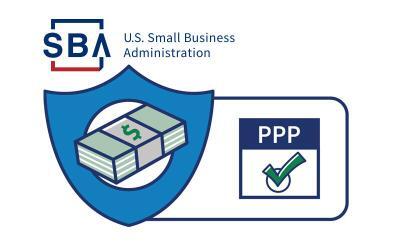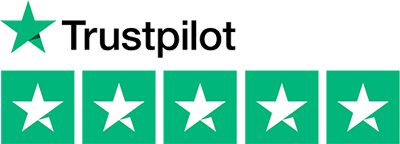With tons of misinformation swirling out there, you may be afraid of making a crucial mistake when it comes to applying for and receiving CARES Act relief funding. Here are 10 mistakes to avoid.
Application Mistakes
1. Not Being Prepared
Any delay in your application could mean your business gets bumped to the bottom of the list. Have on hand:
- Basic business and contact information
- Average monthly payroll costs including employee salaries, wages, and commissions; payment of cash tips; payment of vacation; parental, family, medical or sick leave, insurance premiums, etc.
- 2019 Tax Forms (all four quarters of 2019, and Q1 ’20 if available), including Form 941, Form 944, 1099s, payroll processor records
- Proof of mortgage or rent, mortgage interest, and utility expenses
Articles of Incorporation - Verification and contact information of all owners who own more than 20 percent of the company, including tax forms and each owner’s TIN, EIN or SSN.
- Proof of good standing status of the business
Read More About Payroll: What is Payroll?
2. Including Independent Contractors (ICs)
Only W2’d employees should be counted in payroll costs. Independent contractors can and should apply for the relief funds on their own.
3. Choosing the Wrong Lender
You probably know by now if your business bank is an approved SBA lender, but that doesn’t mean you’ll get the necessary expedited service required to apply for the PPP or EIDL. Once you apply with the lender, it is up to them to process and send the application on to the SBA for approval. Again, any delays could mean your business misses out. Stay on top of your lender and if you are not satisfied, there are many other lenders out there to work with, including some fintech companies.
4. Counting Workers Comp
In all the SBA chat sessions, the question of Workers Comp has come up time and time again. Take note: Workers Comp should NOT be figured into payroll costs. Period.
5. Business Credit Issues
Lenders will definitely take your business credit score in to account when deciding whether or not your business is approved for relief funding. Be sure and check to see that there are no questionable issues with your report and to unlock your credit profile so lenders can have access. Read more about unlocking your credit report.
Mistakes After Receiving Funds
6. Keeping Funds Separate
Once you receive CARES Act funding, it’s important to keep the funds separate and keep detailed records on how you are spending the money. By separating the funds from your other business monies, you’ll have an easier time tracking expenditures.
7. Not Having the Same Number of Workers or Paying the Same Salaries
Another question that comes up frequently is about how to pay employees who were already laid off or who are home due to lockdown/shutdowns of non-essential businesses. The purpose of the relief funding is to keep staffers getting paid, so whether you bring them back to work in some form or you pay them for staying home, you must have the same number of employees as you indicated when you applied for the loan. You also cannot lessen their pay more than 25 percent.
8. Employees on Unemployment
Some employers who have already received funding are discovering some employees would rather keep receiving unemployment, rather than come back to work. The employee cannot double-dip (receive both) and unemployment offices in each state will follow up to make sure that isn’t happening. A small business owner in Laguna Beach, CA ran into this problem when he contacted employees to hire them back after he received his funding. “I had 3 employees who didn’t mind just staying on unemployment, even though one of them was getting paid less than what she would normally make. We had to tell her that the PPP is meant to put everyone back on the payroll, so you are not ‘unemployed.’” Take note: Your lenders will not be checking to see if the same employees are back on the payroll, so you have the option to replace the employees temporarily or permanently as long as the salaries are comparable.
9. Paying Yourself a Salary
If you are self-employed or an S Corp, you must continue to pay yourself a salary to meet the 75 percent requirement for loan forgiveness. Owner draws and stock distributions do not count as salary for this purpose.
10. More Forgiveness mistakes
Make sure you follow all the requirements for loan forgiveness as it pertains to the PPP and EIDL Advance Grant. New information seems to come from the SBA daily so make sure you keep up with the latest news.
It’s very important to track and document absolutely everything so when the lender eventually approaches you for proof of disbursement, you have your ducks in a row.
In the example of the Laguna Beach small business owner with some employees collecting unemployment, disbursement of the PPP was complicated. “Some of my staff had been on unemployment for much longer than others. We had to ask our CPA what to do. He said one thing we cannot discriminate, and we need to disperse the PPP evenly. So, for those who had already collected 4 weeks’ worth of unemployment pay got only some PPP pay, while the staff whose unemployment hadn’t kicked in got full pay from the PPP. To avoid double-dipping, I’ve asked all my employees to submit screenshots of their unemployment benefit page every two weeks.”
Finally, with the newest funding release also comes some clarification on which expenses are permitted under PPP and EIDL Advance loan forgiveness. Payments can only be used to cover:
- Necessary expenditures incurred due to the coronavirus pandemic
- Costs incurred between March and December of 2020.
Getting Help
There are several ways to apply for the various government programs. You can complete the SBA form yourself; find out if your bank offers the SBA loans or work with your accountant.
Like you, CorpNet is a small business facing many of the challenges you face each day; these are challenging times for all of us and we are all in this together. To equip you with some alternative funding sources, please note that the following financial institutions recently started offering PPP Loan Programs to the public. As such, below are the links to other PPP resources where you can apply for PPP once government funding becomes available again:
Assuming Federal Funds are available, we strongly urge you to reach out to one of the institutions listed above or to your primary financial institution to inquire whether you can qualify for a PPP Loan through one of these sources.
We understand how stressful and challenging it is for so many small business owners today. We are here to help so you don’t get overwhelmed. Please contact us if we can be of assistance to you in any way as we are committed to serving you in any way that we can.
Stay Healthy. Stay Strong.





